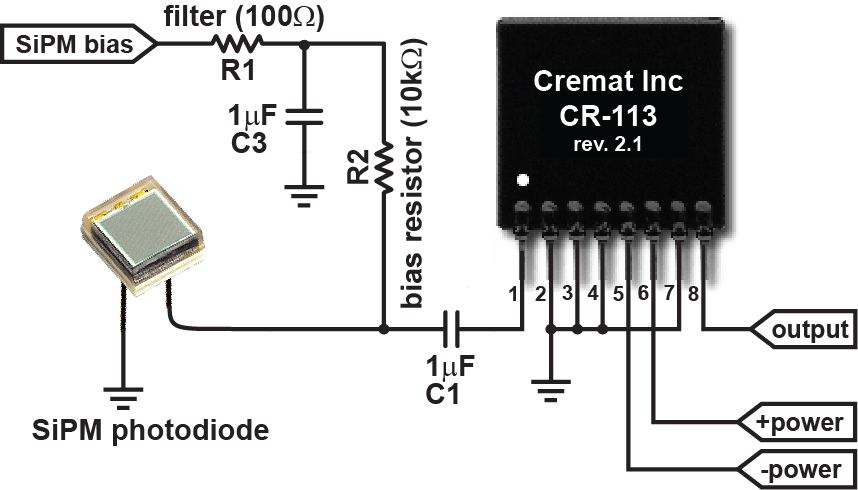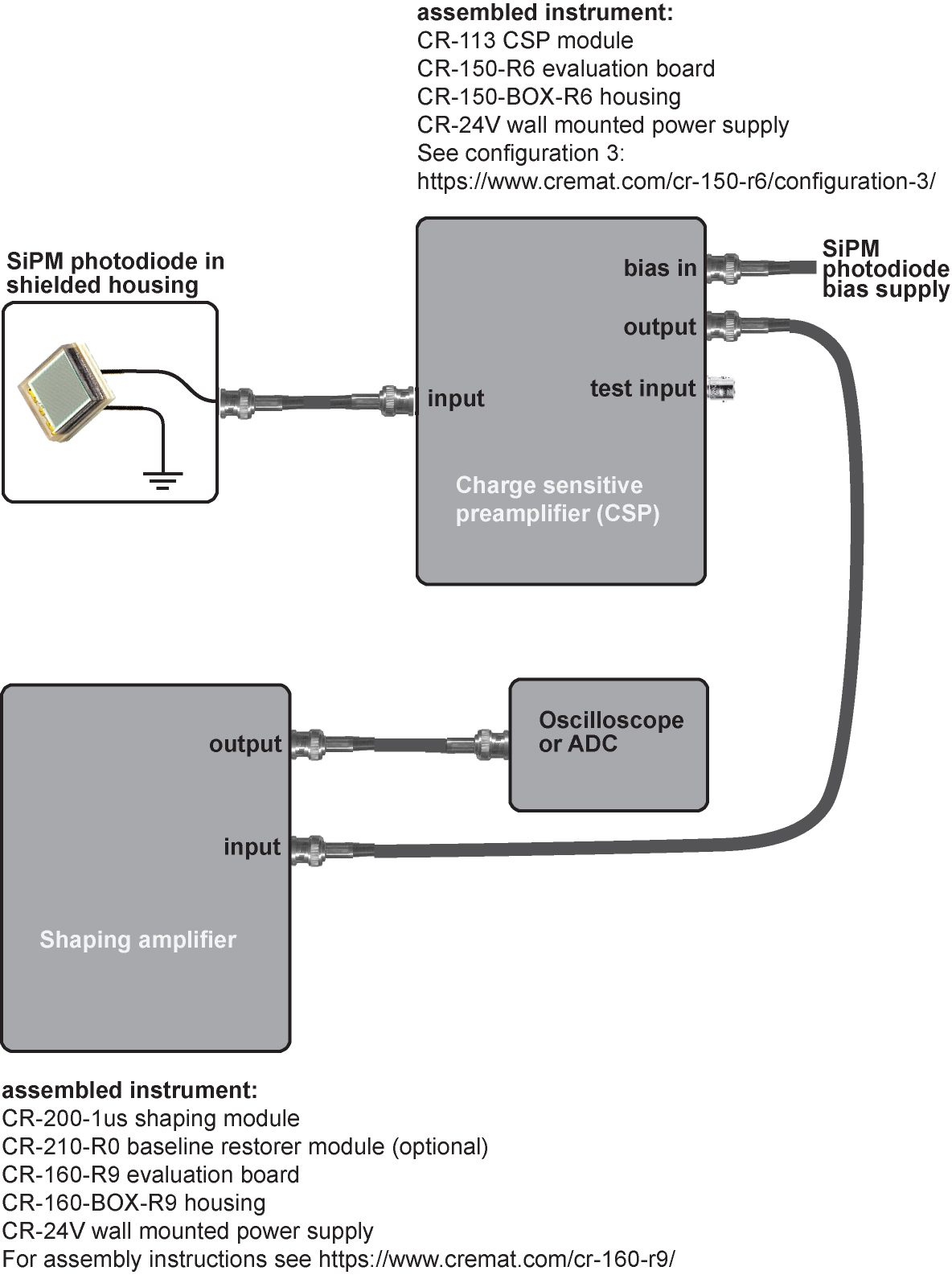Signal pulses from an silicon photomultiplier (SiPM or MPPC) can be read out using a charge sensitive preamplifier (CSP). The integrating nature of the CSP signal provides an output proportional to the total charge flowing from the SiPM detector during the pulse event.
Just a couple examples of pulse-detection applications using SiPMs are the detection of radiation events from scintillators, or the detection of reflected laser pulses.
Connecting a Silicon Photomultiplier to the CSP:
The connection scheme of a silicon photomultiplier (SiPM) to the CSP is shown below, and is known as an 'AC coupled' circuit:

The polarity of the SiPM bias in the above schematic can be either positive or negative, although the SiPM photodiode should always be connected so that it is 'reverse biased'. To obtain positive signals from the preamplifier, apply a positive bias polarity to the bias connection shown above.
A Silicon Photomultiplier based detection setup using Cremat Instruments
An overview of the instrumentation for a SiPM detection setup is shown below:

helpful links:
https://www.cremat.com/cr-150-r6/configuration-3/
https://www.cremat.com/cr-160-r9/
Choice of shaping time in the shaping amplifier
In the diagram above, the shaping amplifier uses a 1 microsecond shaping time, and is a 'middle of the road' choice for many applications. There are, however, some guidelines to help you determine the best shaping time for your application:
1) Choose a shaping time that is long enough to collect all the charge from the SiPM. While SiPMs are fast detectors, the photon signal may have a duration lasting microseconds. For example, detection of a light signal from a CsI(Tl) scintillator occurs over a 2 microsecond duration. In this case and in other applications involving relatively slow signals, use a shaping time that is at least as long as the photon signal duration.
2) Choose a shaping time that is short enough to accommodate the expected counting rate of the detection system.